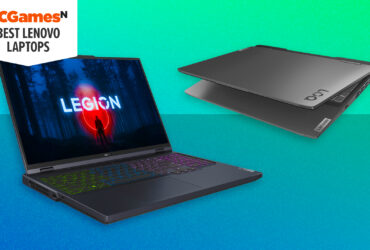
What is the best gaming PC? That depends on your needs and budget. Maybe you’re after a system that spares no expense to deliver the ultimate gaming experience or perhaps you’re on an ultra tight budget and just want to achieve playable frame rates in your favorite esports games. Whether you find yourself at either of these extremes or somewhere in between, we’ve got a gaming PC recommendation for you.
Our top choice right now is the Acer Predator Orion 5000, which packs in an Nvidia RTX 4070 Super while costing just $1,500 at the time we reviewed it. Meanwhile, if you’re after a high-end, stylish, compact system, the Corsair One i500 is a stellar option. And, if you’re on a tighter budget, the Cyberpower Esports Essential is a great choice at under $1,200. For more options at a range of prices, check out the list below. Meanwhile, if you need more guidance on how to pick your perfect PC, see the how to choose section of this guide along with the FAQ that answers all your gaming PC questions.
Why you can trust our advice ✔ At PCGamesN, our experts spend hours testing hardware and reviewing games and VPNs. We share honest, unbiased opinions to help you buy the best. Find out how we test.
Best gaming PC in 2025:
How to choose the best gaming PC
There are two questions you might want to answer first before choosing a new gaming PC. The first is deciding whether to get a console or gaming PC (we of course recommend PC) and then whether to build a PC yourself or buy one of the pre-built systems highlighted in this guide.
Building PCs is surprisingly easy, and we’ve got a comprehensive guide on how to build a gaming PC that takes you through the process step-by-step. However, there’s no denying that it takes extra time and effort and there is a chance you’ll either pick components that don’t work together or you can break something. On the other hand, buying a pre-built PC comes with the reassurance it will work and you generally get a warranty of typically one to three years. You just pay a little extra for that privilege (typically 5-10% more than buying separately).
With those choices out the way, your next choice is whether to opt for a custom built system or a completely off the shelf model. Custom built systems allow you to configure your components, ensuring you get just the right style and performance you need. Companies such as Cyberpower PC, iBUYPower, NZXT, and Origin PC in the US or Overclockers and Scan in the UK let you choose almost every component of your build. You can find more places to shop in our best websites for custom PC builds guide.
The downside to a custom build is you generally pay a little more, you’ll have to wait a few weeks for the system to be built, and there’s a chance your component choices won’t be well balanced. Completely off the shelf options, meanwhile, can often come with great discounts (especially if they’re a little old) and can generally be delivered next day or in just a few days.
Next to decide is whether you want a more traditional large PC or a very compact system. The likes of the Corsair One i500 offer a stunning-looking and powerful system with a very small footprint. However, upgrading later on can be tricky compared to a more traditional case design like with the Cyberpower Esports Essentials or Acer Predator Orion 5000. Meanwhile, the best mini gaming PCs such as the Geekom AX8 Pro a very restricted in how you can upgrade them but they’re absolutely tiny.
Finally we come to the nuts and bolts of picking a gaming PC, which is finding the right components for your budget and needs. For gaming, the most important part of your PC is the graphics card or GPU. Many cheaper and older gaming PCs will have enough power to deliver playable frame rates (60fps or higher) at 1080p in older or less graphically intensive games. Even some integrated graphics (GPUs built into CPUs) systems such as the Geekom AX8 Pro are powerful enough, meaning you can skip buying a graphics card altogether and get a PC for well under $600.
However, if you’re looking to turn up the details in the latest games and run at 1440p or higher resolutions, you’ll need a more modern, powerful graphics card. We recommend an Nvidia RTX 4060 (~$800) or AMD Radeon RX 7600 (~$600) or above PC to hit high frame rates at 1080p in most games and playable frame rates in less demanding titles at 1440p.
Meanwhile, for consistently high frame latest in modern games at 1440p you’ll need to be spending well over $600 for a graphics card alone and around $1,200 – $1,500 on a PC. The Nvidia RTX 5070 or AMD Radeon RX 9070 would be our top choices in this price range. And if you’re looking to play at 4K, you’ll be looking at spending over $2,000 on a PC using cards such as the AMD Radeon RX 9070 XT or Nvidia RTX 5080 or RTX 5090.
FAQs
Console or gaming PC?
Modern games consoles and gaming PCs are getting ever closer in terms of the core gaming experience they can offer. So, if you mainly play controller-based games, rather than using a mouse and keyboard, for many gamers a console is going to be the more affordable option, at least in terms of up front cost – console games tend to be more expensive.
However, if you at all see value in being able to also use your gaming PC for other tasks, such as web browsing, video watching, work, and much, much more then a gaming PC is a fantastic option. They’re incredibly powerful and endlessly versatile, especially if you buy a PC that’s easy to upgrade. What’s more, once you’ve got over the initial hit of buying a PC, future upgrades can be far more cost effective than consoles. The best power supply and best PC case options can last decades, as can case fans, coolers and more.
Buy or build a gaming PC?
If you’re just starting out in the world of gaming PCs, it does make a lot of sense to buy a pre-built system like this ones highlighted in this guide. They’ll come ready to roll and with a warranty to cover any issues for at least the first year of use. However, building a PC isn’t as hard as you might think. Check out our how to build a gaming PC guide to see just how relatively simple it can be.
Why buy a prebuilt gaming PC?
Prebuilt PCs provide convenience and security that can’t be matched when building a system yourself. As the components are all pre-assembled ahead of delivery, your new rig will be ready to go as soon as it arrives at your doorstep. You’ll also be entitled to additional warranties and potentially technical support if something goes wrong.
Is $1000 enough for a gaming PC?
Yes, anything from $600 upwards is typically enough for a gaming PC. Naturally, higher budgets allow you to splash out for more powerful specs, but more expensive components aren’t explicitly necessary for a solid experience in most games.
A desktop PC isn’t for everyone. If you need portability, explore our best gaming laptop guide. If you want a PC in a small space, the best mini gaming PCs keep getting better and better.
How we test gaming PCs
When testing the best gaming PCs we’ll carry out benchmarking and consider the design, build quality, components, and noise generated by the system. A PC should look clean and attractive on the outside and inside, where cables should be neatly tidied out of sight, and access to key components shouldn’t be obstructed.
We love to see innovative designs that work to improve cooling, looks, and access to components. While we expect the fans in a PC to make some noise when running it at full load, we also expect this to be well-tuned in line with temperatures. A well-built PC will have a carefully-considered airflow system that keeps your components cool under load but doesn’t assault your eardrums.
When benchmarking a gaming PC, our primary tests naturally involve games. We benchmark Cyberpunk 2077 and F123 to test each PC’s performance when enabling the latest graphics features at high settings, including ray tracing, DLSS, FSR, and frame generation. We also test with Total War: Warhammer III to gauge gaming performance without ray tracing enabled.
Each test is run at least three times, and we discard any anomalous results before calculating the average. We report the average and minimum results and work on the principle that a game is smoothly playable if the PC can generate a 60fps average and at least a 45fps minimum in these titles.
Finally, we also run 3DMark, a synthetic benchmark to compare performance with a final score. You can run 3DMark on your system right now, and then compare the scores from our reviews.
Of course, no one buys a PC just for gaming, so we also run Cinebench to give you an idea of how the CPU performs in each system. This gives you a multi-threaded result, where you can see how a CPU with loads of cores performs in hardcore content creation scenarios, such as video encoding and 3D rendering. A single-threaded result represents single-core CPU usage, which is important for most basic Windows software, including image-editing packages.
Our final score and conclusion balance the performance in our benchmarks with the general design and build quality, as well as the price and warranty package compared to the competition.











Leave a Reply